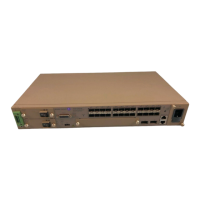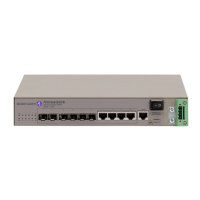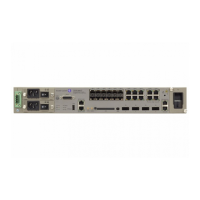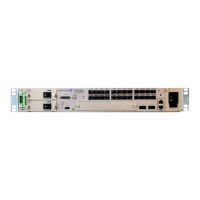Installing AC Power Components
Page 72 7450 ESS-7
Installing AC Power Components
This section provides information and instructions to perform the following:
• AC Power Warnings and Notes on page 72
• Installing an AC PSM on page 73
• Installing an AC PEM on page 77
• Connecting the AC Power Cord on page 79
AC Power Warnings and Notes
Warning:
• Before connecting or disconnecting ground or power wires, make sure that power is removed
from the AC circuit.
Caution:
• This product relies on the building’s installation for short-circuit (overcurrent) protection.
Ensure that a circuit breaker, or other equivalent means, no larger than 20A is used in the
building’s AC branch circuit for the current carrying conductors.
• There must be no switching or disconnecting devices in the earthed circuit conductor between
the AC source and the point of connection of the earthing electrode conductor.
• This equipment has a high leakage current due to multiple AC power modules. Connect each
power entry module to a separate branch circuit with proper earth ground connections.
Notes:
If you intend to use AC power entry modules in the 7450 ESS-7, observe the following
guidelines:
• AC power modules operate with a nominal utility system voltage of 200V to 240V, but will
operate with input voltages ranging from 175 to 264 VAC.
• A fully redundant AC system must have two AC power entry modules and two AC-to-DC
power converters installed and operational.
• Each AC PEM contains an AC plug receptacle to accept an AC power cord. The other end of
the AC power cord must have a plug that fits into the power source receptacle that is standard
for your geographic region.
• Each AC-input PEM requires a dedicated 20A service.
• For a listing of the electrical specifications for the AC-input power module, see Power Module
Specifications on page 40.
• The remote power source (circuit breaker panel, outlet, etc.) must be easily accessible.

